
7 minute read
A magical balance
My interior design project for Portrait Milano: consistency, class and genius loci
T ex T M ichele B ö nan
Nine years ago, when I crossed the threshold of Milan’s former archbishop’s breathless.
What struck me was that this place, one of the most fascinating in the whole of the city, had remained a secret and almost forgotten for years, despite being located at the heart of such a popular and well-known neighborhood. I’m now understandably delighted that this unique building, after a huge amount of teamwork, has become the new preferred destination in town. I’ve always thought of it as a gift that Ferragamo has given to Milan and it was with this idea in mind that I designed the interiors of Portrait Milano. Where did I begin? Always with the same principle: consistency between the place, the host and the intended use. Our hosts are Ferragamo, which meant that the experience and elegance of the fashion house simply had to prevail, as well as the exceptional service, with the same welcome I experienced at the family’s own homes. My connection with the family actually dates back to both my childhood friendship with Leonardo
F loren T ine archi T ec T and in T erior designer M ichele B ö nan is renowned F or his renovaT ion and decor projec T s . F ro M privaT ely owned ho M es T o B ou T ique ho T els and even superyach T s , he B rings luxury i Talian li F es T yle T o each o F his projec T s all over T he world and my involvement in doing the interior design for many Lungarno Collection hotels; a long-standing partnership, which began with the opening of the Hotel Lungarno in Florence in 1995 and marked my debut in the world of hospitality. Prior to that, I had worked on privately owned homes, some of which were truly extraordinary, but never on hotels. It was the cozy and private scale of my work that sparked Leonardo Ferragamo’s interest for his debut in the hotel segment. It was a leap in the dark for both of us, but that boutique hotel in step with the times began a new era for luxury hotels in Italy. That was when I started to research

Salvatore Ferragamo’s work, a genius whose story is now world-famous. In order to pay tribute to the “Shoemaker to the Stars” at this prestigious Milanese destination, I chose to tell his story lie in the leather handles and bronzed brass on the doors, the rattan boiserie, the bathrooms mostly in pure white Carrara marble, while others vaunt a blend of porphyry (considered the stone of emperors) and Breccia Medicea, a type of marble used since Roman times, which was particularly valued in the sixteenth century because of the Medici family, hence the name.
Other elements refer to the place’s background: the library, the decision to embrace cardinal red as an iconic color and larch spaces (a humble wood reminiscent of the starkness of past seminaries) are examples of an awareness of participating in the history of this building linked to the Church, culture and hospitality, which guided my design plans. The city also played its part. Milan is an elegant city. Every palazzo, old or modern, and every apartment block has entranceways that continue to be gloriously manicured with extreme always admired this innate style, I wanted the timeless charm of Milanese homes to be extended everywhere. In particular, it echoes through the boiserie in the rooms and suites, crafted from super smooth walnut that recalls the work of Gio Ponti and the great architects of the golden age of Milanese design.
It was no less important, however, to design a place that felt truly like a second home, welcoming and easy to live in, as well as a mirror image of beauty, openness and cleanliness. This purpose is pursued through an invisible network of elements that, even back in the initial plans, incorporated technology, expert installation and impeccable service. Special attention, for example, has been given to not threaten to disturb conversation among guests anywhere in the hotel, bar and restaurant. The same meticulous care was taken in selecting and positioning all the functional devices in the rooms in order to be straightforward, intuitive and readable. Concealing all the light and music sources was key to achieve the most natural effect possible. Most of the rooms look out over the upper loggia, which completely protected by subtle moveable glass shutters, allowed a private living room to be created in every room, multiplying the absolute sense of service and hospitality like in the other hotels belonging to the group. Even more crucial is the fact that the hotel acts as a connector to the magic and almost secret garden to the rear, an enchanted haven that is accessed from the horseshoe-shaped bar between the building and the garden itself.

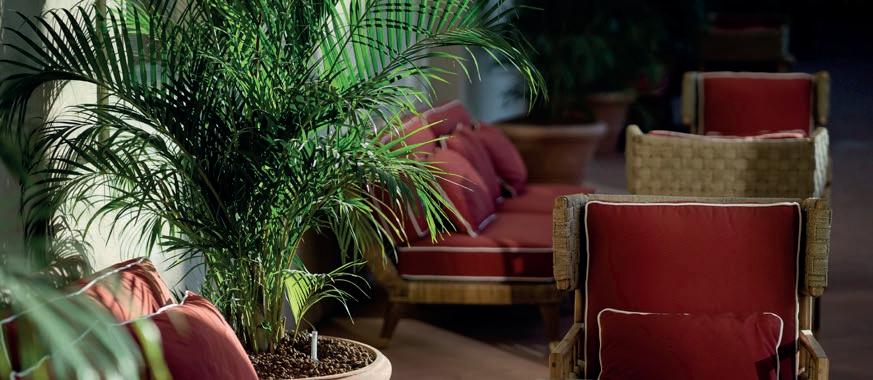
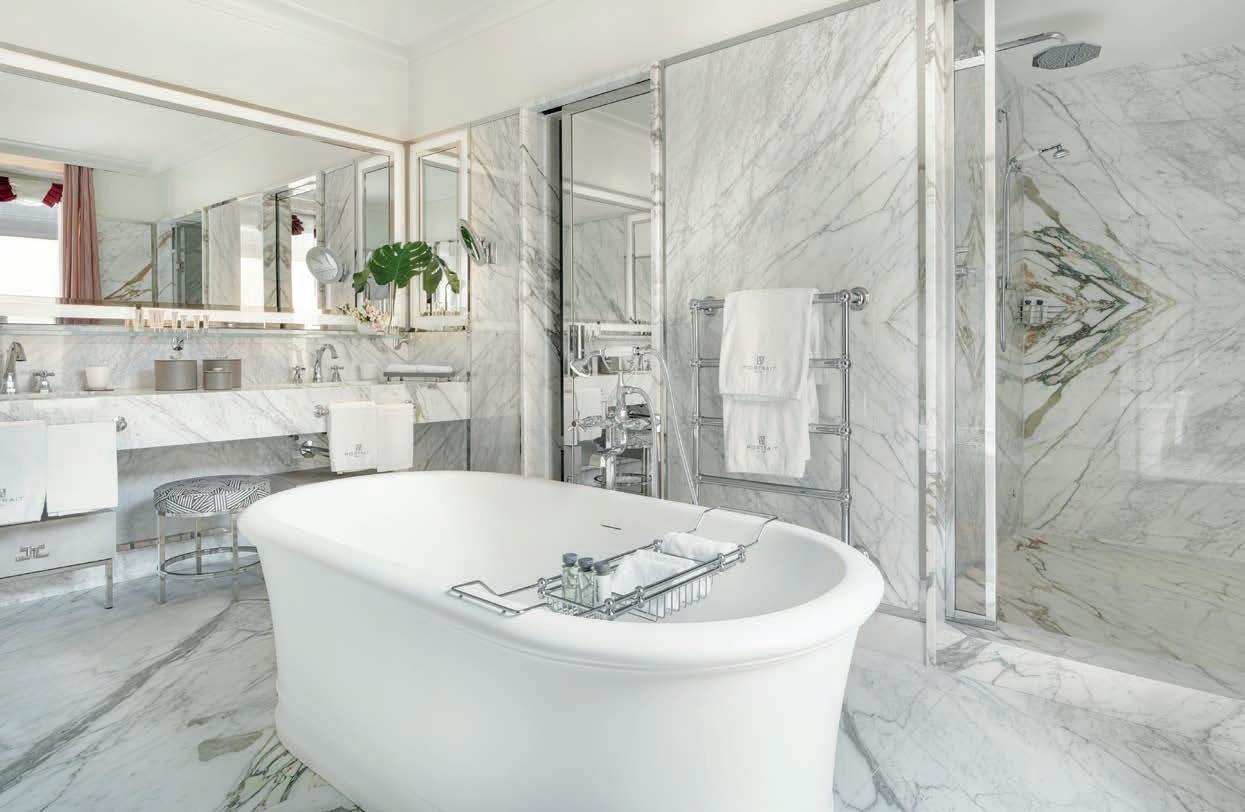
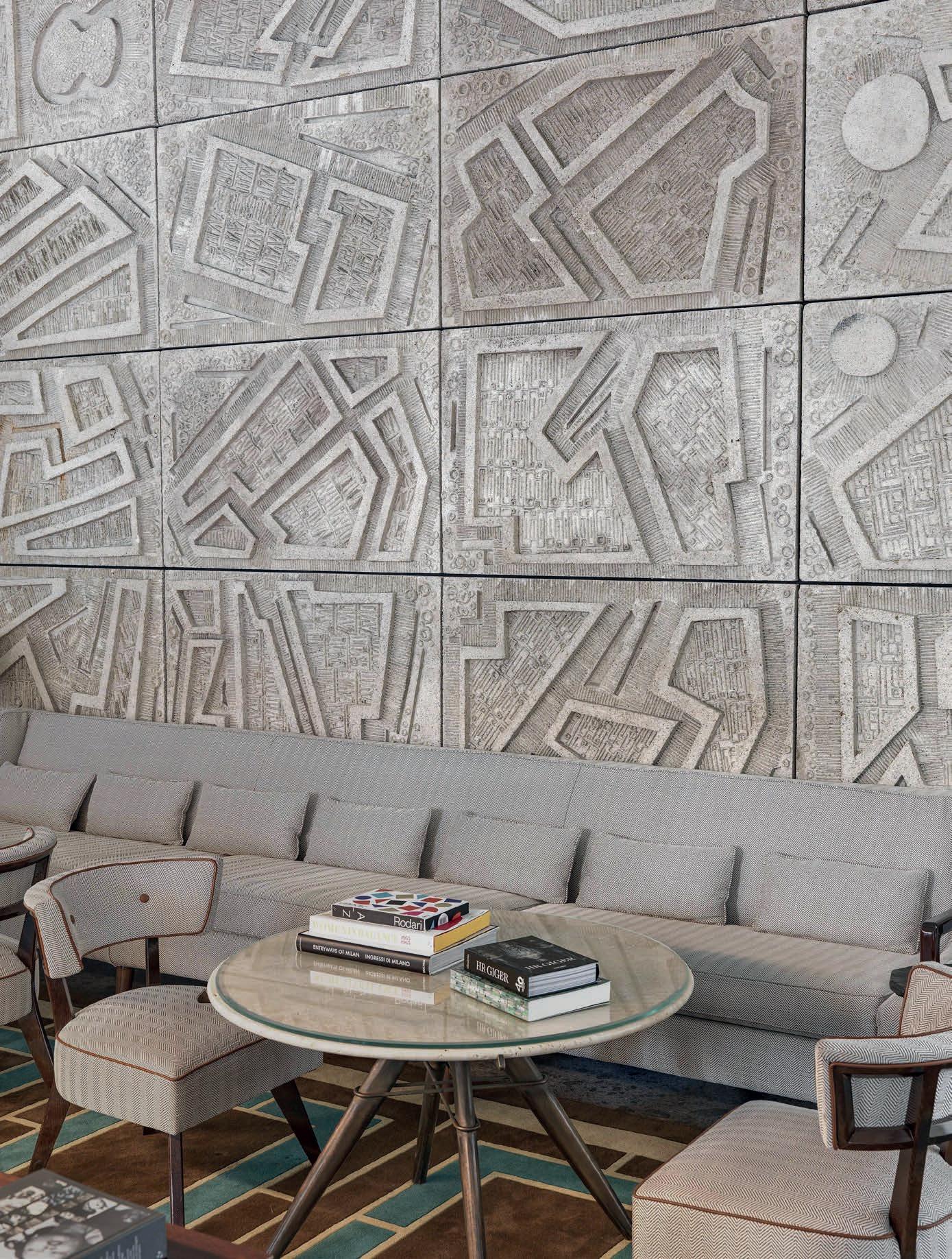

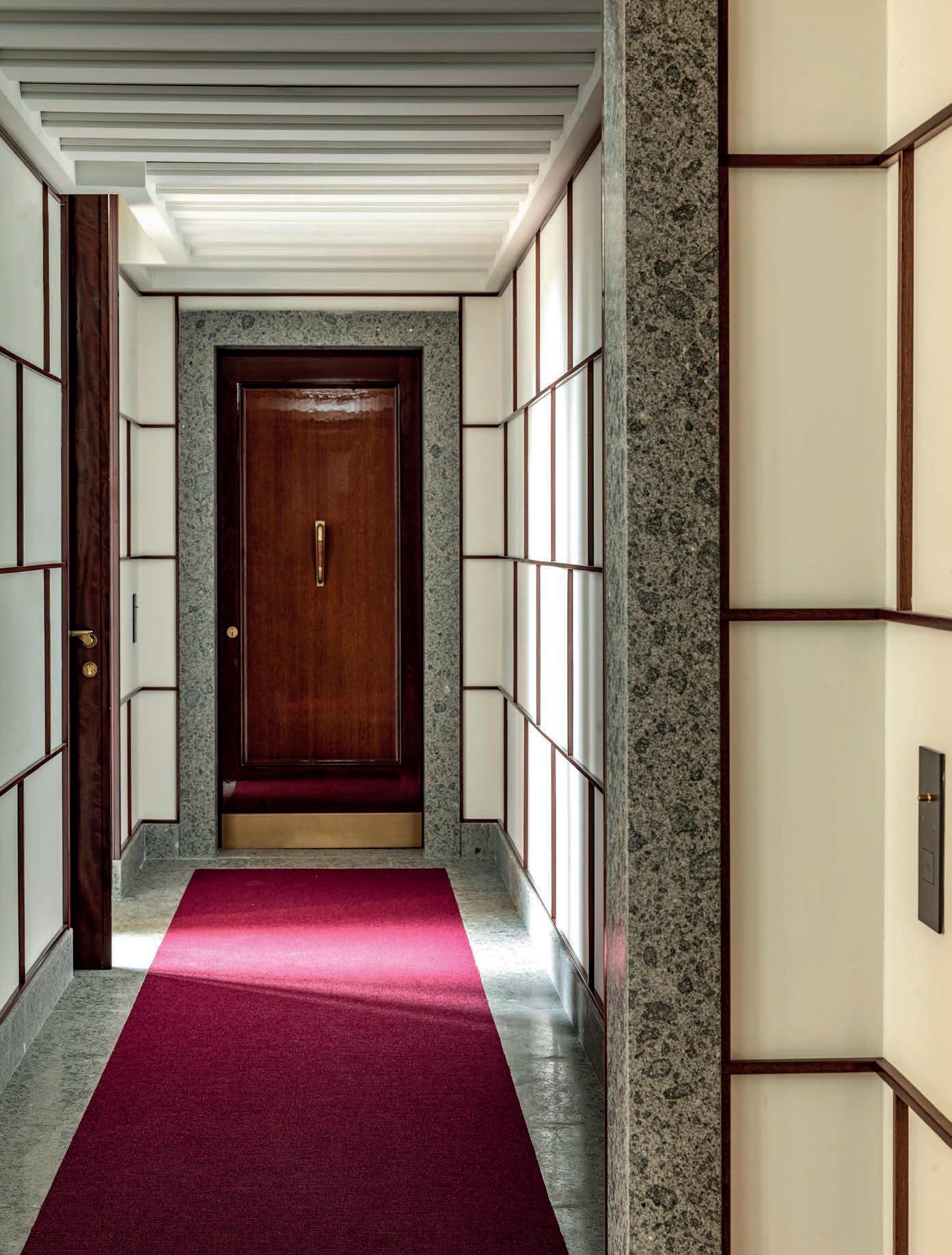



Lastly, a surprise was waiting in store when I discovered the striking ancient colonnade in the basement, which reminded me of the famous cisterns in Istanbul. That formed the guiding idea for the pool plans. An aqueous space hovering between sky and land, which now makes Portrait Milano one of the few hotels in central Milan that provides so much harmony between variety and movement. I have asked myself several times if harmony is actually one of the driving forces of this Milanese success story, but in all honesty, I don’t have the answer. What I do know for sure, however, is that the blend of architecture, interior design, service, light, sound, atmosphere and service have created a welcoming place for unparalleled entertainment, culture and hospitality right here. Portrait Milano is magical, unique and exceptional.

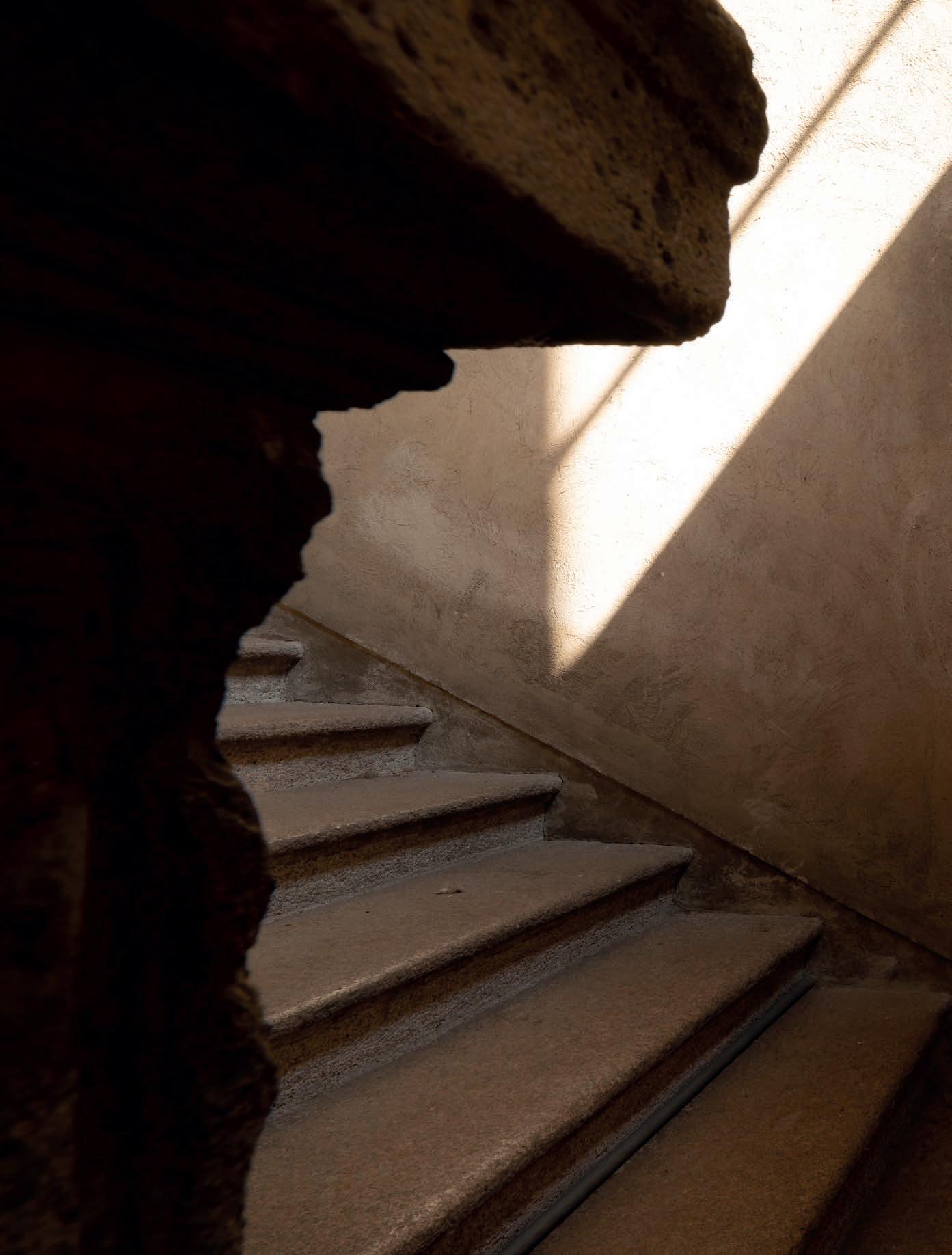
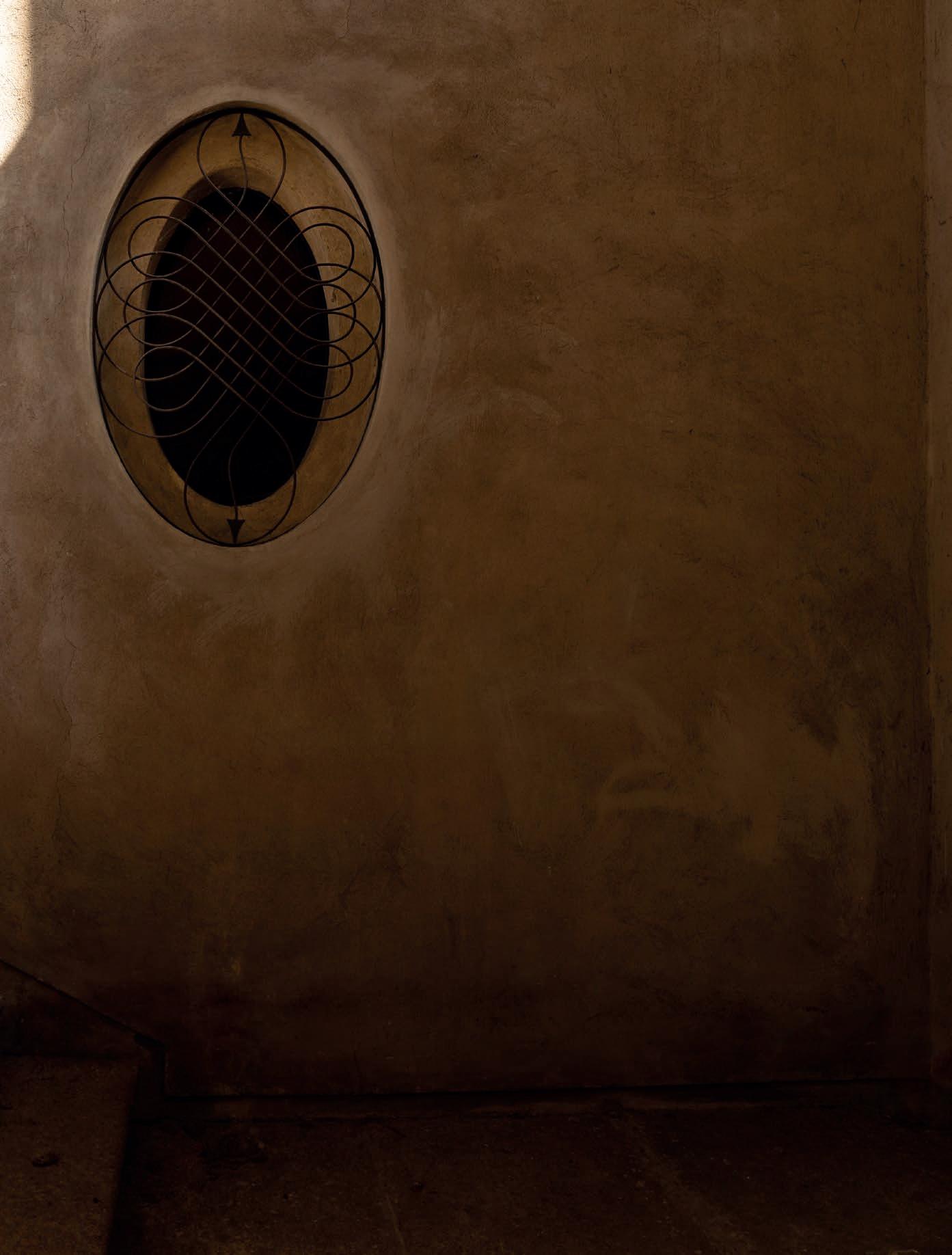
P iazza del Q uadrilaT ero before T he res ToraT ion
T oday T his P iazza is a P res T igious
P edes T rian area be T ween corso v enezia and via s an T ’ a ndrea , where T he Tailored hos P i Tali T y of T he P orT rai T brand ( es T 2013) blends sea M lessly wi T h res Tauran T s , sho PP ing , exclusive even T s and o T her ParT ners , giving T he locaT ion back To
M ilan and creaT ing a fascinaT ing culT ural and arT is T ic exchange

When you have a vision in life, you believe in it intensely and strive to achieve it, and you might even come across a healthy serendipity that determines the outcome once and for all. As a diehard optimist, I have always believed that people who have small, yet potent, quantity of risk, sparking coincidences that become opportunities worth seizing. That’s what happening at the start of the Portrait Milano story. I had spent years viewing real estate as the perfect location for our new Portrait and the search felt endless.
One hot day in September 2013, I happened to look out of a window in a building at the heart of the Quadrilatero and noticed a sprawling, majestic palazzo, whose windows were shuttered. I wonder what it is , I thought to myself… It turns out that it was the former Bishop’s Seminary belonging to the Diocese of Milan, a beautiful and special place, which had been hidden from public view and
500-year existence. It was a shame that it wasn’t for sale and not even available for rent; most of all, they said to me, ‘It could never become a hotel’. Despite that, I just knew that it would be the perfect place we had been looking for all these years. Our President Leonardo Ferragamo had the same incredible feeling, combined with a clear and enticing vision: to bring new life to a place that had been closed for years, reopening it to the city. From that moment on, we had meeting after meeting with the Church, the owners of the building; meetings that connected us with people of culture and extraordinary humanity and values similar to those of our company and the Ferragamo family, who became and foremost. Humilitas is the Borromeo motto, which can be seen above the entrance in the former Seminary along Corso Venezia, as well as being carved nine times into the stone of the building’s - our project, acting as a guiding light . Even back then, the idea was to create an inclusive (not exclusive) project. Years passed call from Milan: “We have decided to ac - train, ready to formalize the contract, but as soon as I arrived, I found out that we would have to take part in an international bid to be assigned with the conversion project.
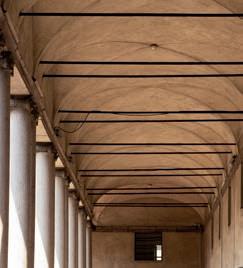
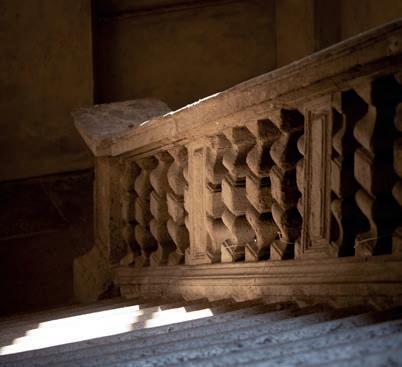

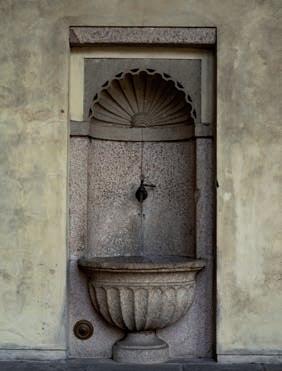
For the next 2 years, we underwent a conour taste
100% Italian , one of the few remaining capable of developing a high-level hospitality project in our country. The second reason was because of the hospitality project we had submitted. The plans envisaged the co-existence of a private dimension for the hotel (Portrait Hotel) and an original public dimension, which turned the inner courtyard into a piazza open to locals and travellers , as well as the decision to hold events that would bring it to life and connect the square with the two thoroughfares of the Quadrilatero della Moda: corso Venezia and via Sant’Andrea. Piazza del Quadrilatero is symbolic of this inclusiveness or, as I like to call it, ‘inclusive exclusivity’ in Milan, a lively metropolis that I have always loved, the powerhouse of Italy.
This dream and vision saw Leonardo Ferragamo at the forefront and I am honoured to have been a spokesperson for the project, birthing a venture that has involved so many talented individuals , from architects to engineers, builders and visionaries , who, with us, believed in this truly incredible project.
Now this project has a name - Portrait Milano - and a form that we never imagined could be so beautiful, not even in our wildest dreams.
After all, believing is everything. Always.

10_11 Milano
Mixology crossing experience
Beefbar Milano











